Leuvehaven in about 1895
Leuvehaven in about 1895
The Leuvehaven, Rotterdam in about 1895. Image kindly supplied by the Gemeentearchief Rotterdam.
Compare this photograph with Petrus van der Velden's 1867 painting of the same scene.
Related reading: McCahon and van der Velden
Collection
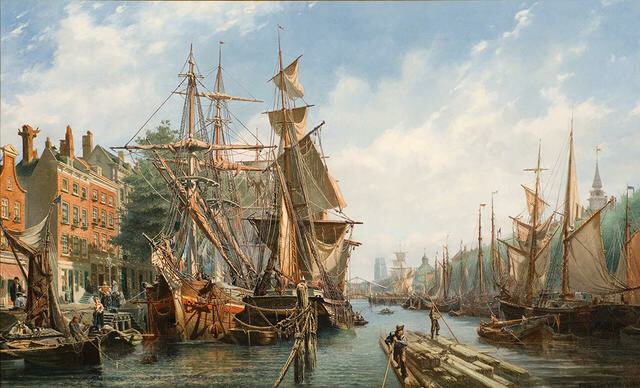
Petrus van der Velden The Leuvehaven, Rotterdam
Petrus van der Velden turned to painting full-time in 1867 after six years as a struggling self-employed lithographer. “The first year was the hardest, and at the end I had done a picture; the harbour and the ships”, he later recalled. Exhibited in Rotterdam and then the Antwerp Salon, it sold to “an English gentleman … for 300 guilders [£25]. Quite a fortune!”
(Out of Time, 23 September 2023 – 28 April 2024)
Notes
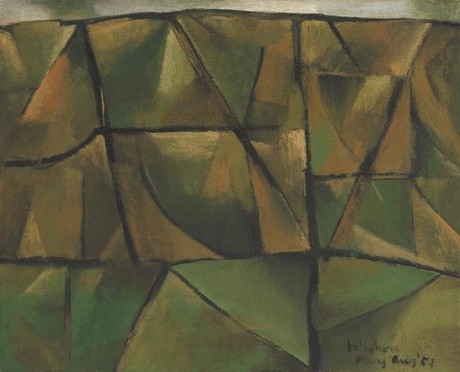
Canterbury Landscape by Colin McCahon
In 2014 we purchased an important landscape work by Colin McCahon. Curator Peter Vangioni speaks about this new addition to Christchurch Art Gallery’s collection.
Article
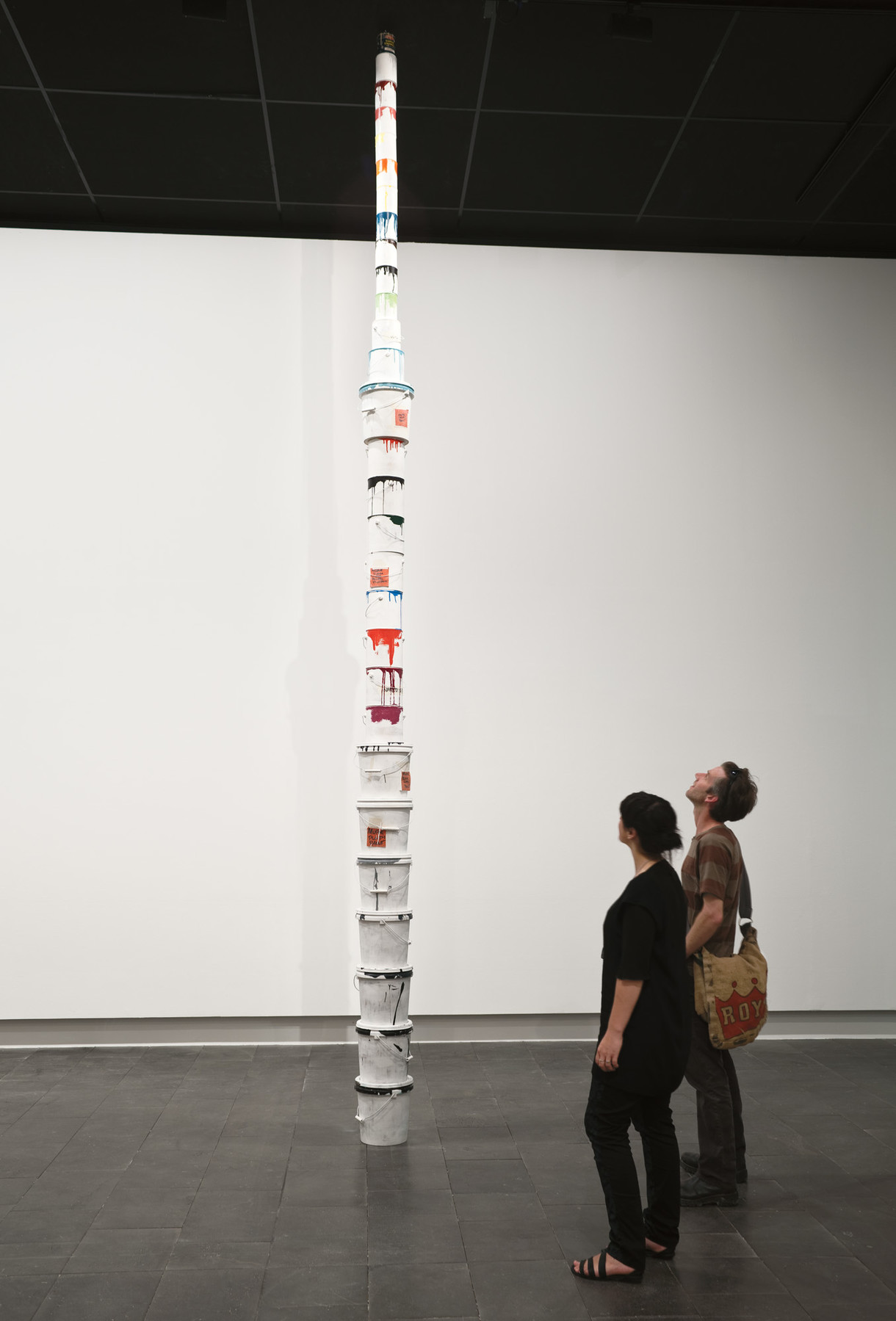
Gazumped
One of the exhibitions brought to a halt by the 22 February earthquake was De-Building, which critic Warren Feeney had described only days earlier as 'Christchurch Art Gallery's finest group show since it opened in 2003'. Seven months on, the show's curator, Justin Paton, reflects on random destruction, strange echoes, critical distance, and the 'gazumping of art by life'.
Interview
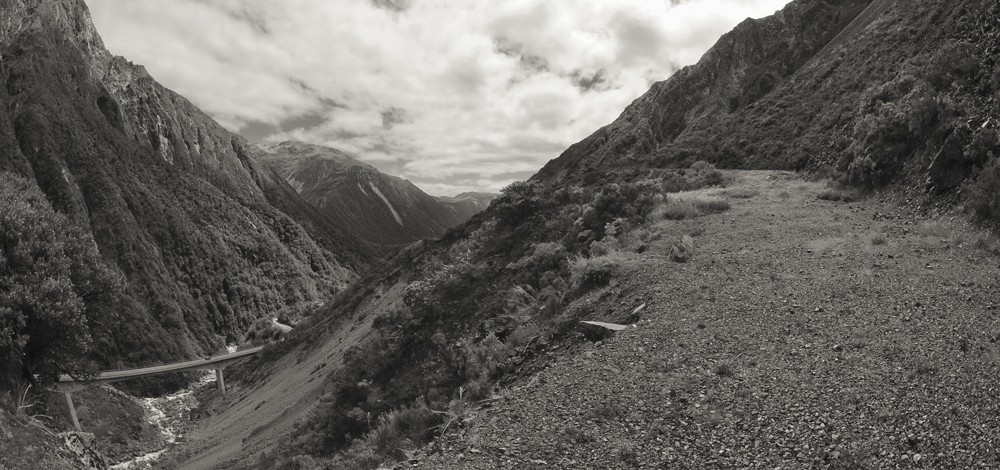
Otira: it's a state of mind
A short road trip to the Otira Gorge was the scene for a conversation between Gallery curator Peter Vangioni and two of the artists included in Van der Velden: Otira, Jason Greig and the Torlesse Supergroup's Roy Montgomery.
Article
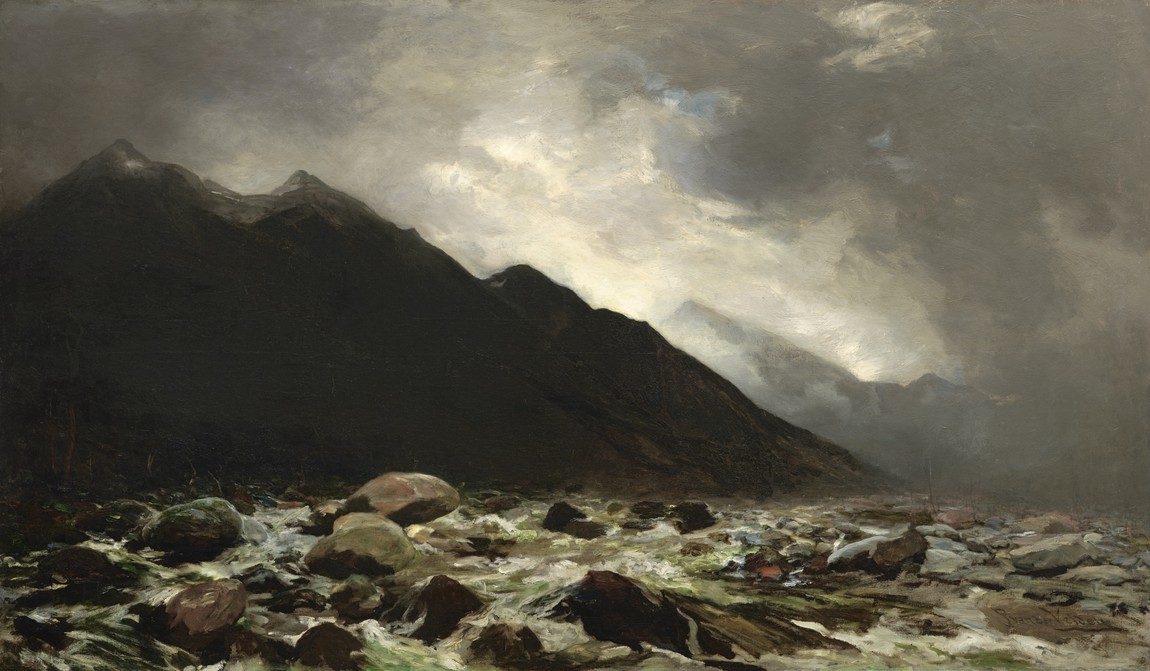
Van der Velden: Otira
A first encounter with a painting by Petrus van der Velden more than twenty years ago was the start of many years of research for Gallery curator Peter Vangioni. Peter is the lead author of the Gallery's new book on van der Velden, and talks here of his fascination with the artist's Otira works.
Collection
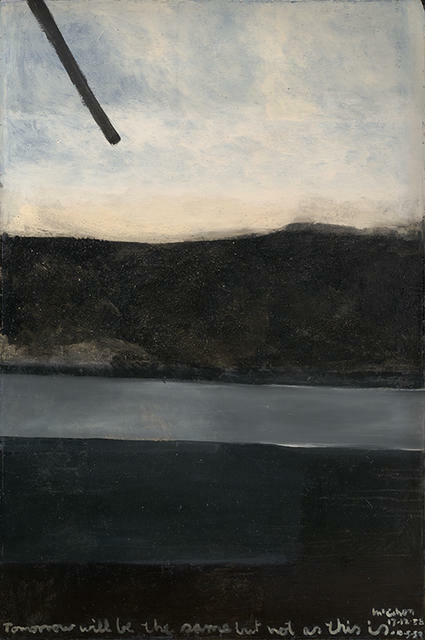
Colin McCahon Tomorrow will be the same but not as this is
Colin McCahon was an important figure in Jonathan Mane-Wheoki’s (Ngāpuhi, Te Aupōuri, Ngāti Kuri) life – first a family friend when Mane-Wheoki’s family moved to Titirangi in the 1950s, and then a teacher when he attended the night classes McCahon taught in the attic of the Auckland Art Gallery Toi o Tāmaki. While he was a student at the University of Canterbury, Mane-Wheoki frequently visited the Robert McDougall Art Gallery to view McCahon’s Tomorrow will be the same but not as this is, and the work held a special place in his heart. The other two works shown here were purchased when Mane-Wheoki was in London studying at the Courtauld Institute of Art. While there, he was commissioned by the McDougall Gallery to purchase works for the collection. In 1974, Mane-Wheoki recommended the entire budget he had available be allocated for the purchase of this Degas etching, and the following year he secured this Andy Warhol print, both small yet exemplary international works.
(Living Archives, 25 October 2025 – 8 March 2026, exhibited alongside 'Manet assis, tourné à droite' by Edgar Degas and 'Mao tse-Tung' by Andy Warhol)
Collection
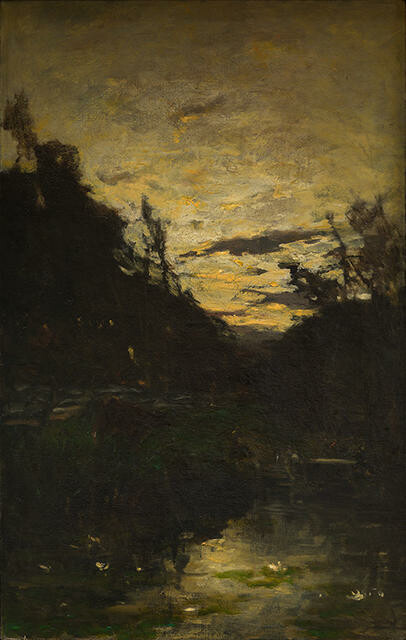
Petrus van der Velden Nor’western Sky
The hot, dry nor'west winds of Canterbury produce dramatic cloud formations and an atmospheric light. Petrus van der Velden has captured these effects with what is probably Christchurch's River Avon in the foreground. He lived near the river between 1890 and 1893. The colonial woman bent over, occupied with her task of work, has echoes of his earlier Dutch paintings, which focused on Dutch peasants at work. Van der Velden painted in a realist manner, which was influenced by his association with the Dutch Hague School of painters who favoured dark sombre tones and a loose style of brushwork. The nor'west scene is created by using strong contrasts of light and shade (chiaroscuro). Born in Rotterdam, Van der Velden established himself as a painter, particularly of marine subjects, in Holland, from where he emigrated in 1890. However, he struggled to make a living in Christchurch and in 1898 went to Sydney. He returned to settle in Wellington in 1904 but died in Auckland.
Collection
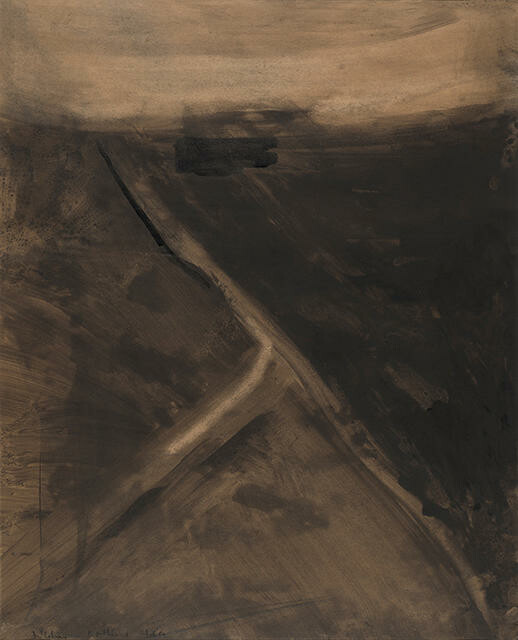
Colin McCahon Northland
In 1958, Colin McCahon spent several months in America, visiting numerous art museums to see historical and contemporary art from the United States and Europe. Returning to a wintry Aotearoa New Zealand, he struggled to readjust. Eventually he found solace and inspiration in memories of a place very close to his heart – the wild, wind-sculpted landscape of Aotearoa’s Far North. Oil paintings were followed by a series of ink wash drawings, painted on paper spread out over the floor like a continuous, unfolding frieze. They are dark and lonely images, full of longing and a sense of return. “It’s a painful love, loving a land,” McCahon wrote. “It takes a long time.”
(Absence, May 2023)
Collection
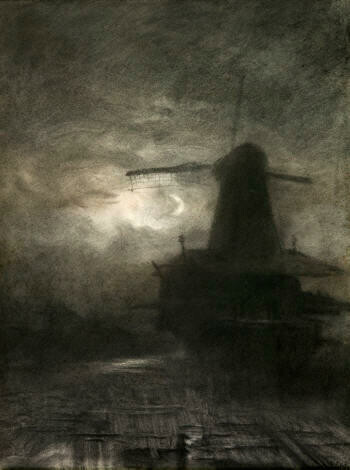
Petrus van der Velden Windmill by Moonlight
“The greatest of all lessons is to learn to see. Many are ‘colour blind’ till they have their eyes opened to nature’s lessons, which she is always trying to teach us. But we must always tell what nature says to us, simply and directly without pretence or falsehood. Tell the Truth. Christ was the greatest artist. His words and pictures are a simple telling of nature's lessons – they are always the Truth. ‘We reason with colours. Colours are dead’, but by telling what nature teaches us the dead colours enable us to express the wonders and beauties of the Creator’s work.”
—Petrus van der Velden
(McCahon / Van der Velden, 18 December 2015 – 7 August 2016)
Collection
![Burial in the Winter on the Island of Marken [The Dutch Funeral]](/media/cache/9a/96/9a96b5688dc57ff080da3f88edc59314.jpg)
Petrus van der Velden Burial in the Winter on the Island of Marken [The Dutch Funeral]
Research for the exhibition Closer (16 December 2017 – 19 August 2018) resulted in the restoration of this work's original title. In Dutch 'Begrafenis in den winter op het eiland Marken' and in English 'Burial in the winter on the island of Marken'.
Combining a wintry landscape with an equally bleak portrayal of loss, this painting has captivated many visitors since joining the Gallery’s collection in 1932. Small details, like snow-dusted shoes, noses red with cold, and a woman folded over by grief, are observed with such accuracy and tenderness by Petrus van der Velden that this funeral procession on an isolated Dutch island feels just as real as it looks. However, its most important figure – the reason for the gathering and for all the grief we see – remains unseen. The deceased, said to have been a drowned local fisherman, is present only in the dark shape of the coffin – and in the faces of those left behind.
(Absence, May 2023)
Collection
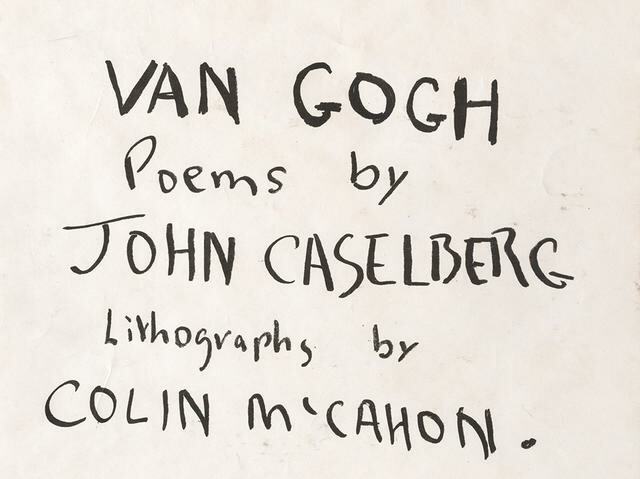
Colin McCahon Van Gogh: Poems by John Caselberg
Colin McCahon produced his first lithograph in 1954, and in 1957 completed two suites of lithographs, including Van Gogh – poems by John Caselberg. He employed a commercial lithographer for these works with mixed results, likely due to the fact that he had little say in quality control with the printer. Nevertheless, it was ultimately a successful suite. Colin incorporated John Caselberg’s poem sequence, ‘Van Gogh’, into his drawings, writing the poem out across several sheets in his iconic handwriting, which he also usedin his paintings. Colin also worked with other print mediums, including a small potato print also in this exhibition, but it is his lithographs from the 1950s that were his most successful.
Ink on Paper: Aotearoa New Zealand Printmakers of the Modern Era, 11 February – 28 May 2023